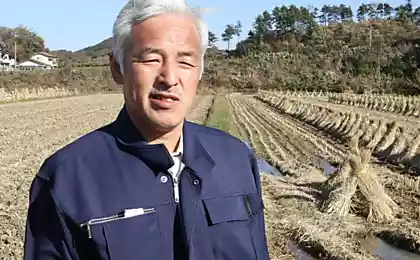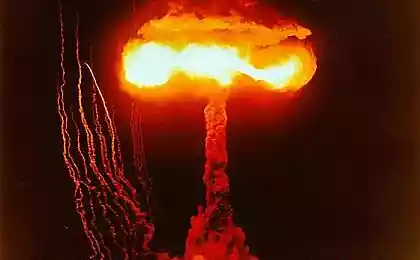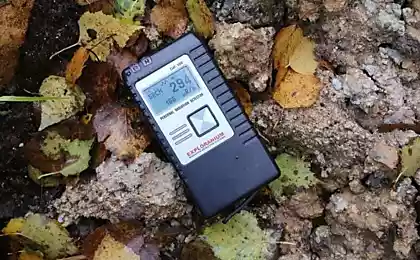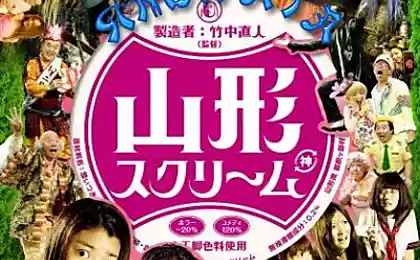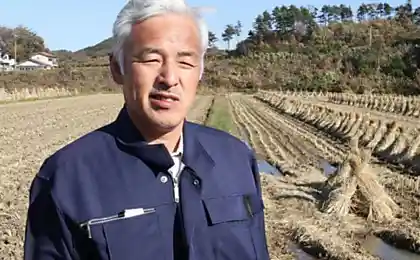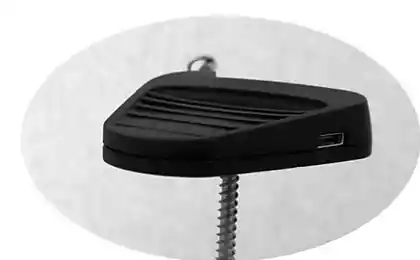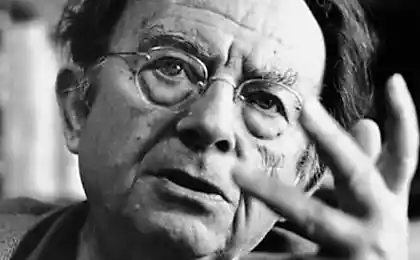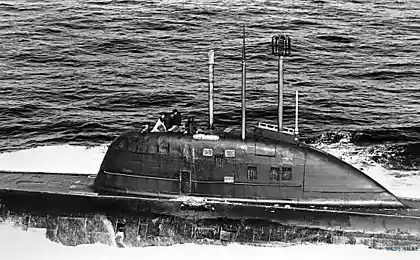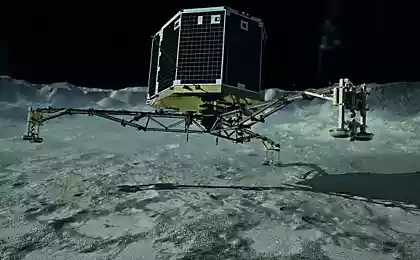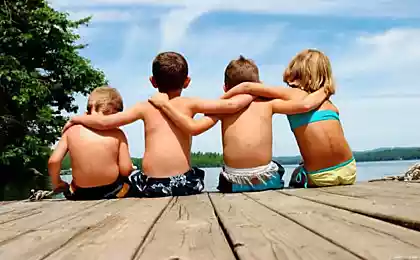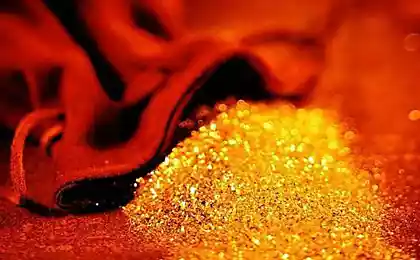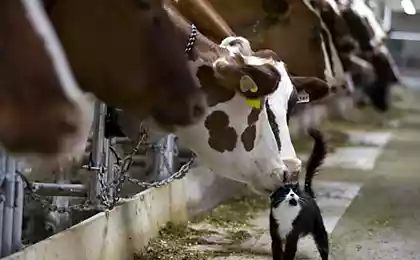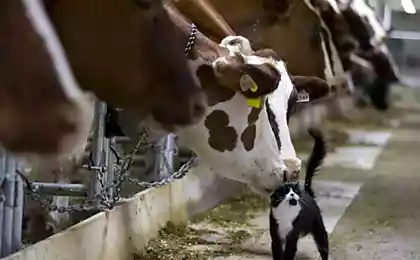2482
Radioactive Man - Naoto Matsumura, who has not left Fukushima
A few days ago, remembered the second anniversary of the earthquake that devastated Japan, and which caused one of the most horrible nuclear disasters in world history when the Fukushima Daiichi reactor leaked radiation. In the rush to the nearby towns were evacuated, leaving empty houses, quiet streets and animals without owners. In the small town of Tomioka, which, however, is less than six miles from the Fukushima Daiichi reactor, one man refused to leave his house: Naoto Matsumura, 53-year-old rice farmer in the fifth generation, the most hard-nosed man in Japan, if not in the whole world .
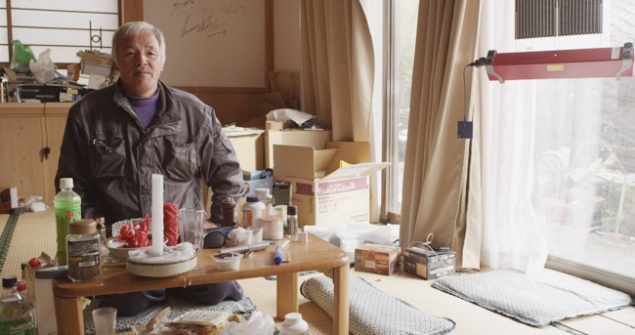
"I was born and raised in this city," - he told us. "If I die, it will happen in Tomioka." Naoto brown face from sunburn and wrinkled smile; his dark eyes looking at us from under heavy eyelids - this is not the face of a man who decided to go against the government, living in places where others are not even allowed to call, but Naoto comfortable with his disobedience.
Since he received a dose of radiation 17 times more than there are on average per person, and because for some time he ate only meat, vegetables and fish, which were soaked with radiation, some researchers from the Japan Aerospace Exploration Agency wanted to expose his analysis. "When I lay down and let them see me, they told me that I" champion "," - by which he means what has the highest level of radiation exposure in Japan. "But they also told me that I did not get sick more years, 30 or 40. Anyway, this time I'll be dead, so this can not worry».
Naoto home. It does not have electricity, so it uses solar panels to charge your mobile phone and computer.
They insisted that Naoto no longer ate no local produce, so now he drinks spring water, which is checked for radiation, and eats what will bring in aid from the outside. But on the other hand, his daily life has not changed under the influence of invisible but harmful particles and waves that are circling around him.
"I used to radiation. But not in the way that I see it, the field of all this "- he told us. "Other people who come here for a while forget about it ... I'm sure if you guys come here a couple of times, you will have to spit. But the arrow on the Geiger counter never stops its movement, so if you brought one with him, then you will already have this worry. That's why I do not take it with you. Although, even if I had it, I would have hardly used it ».
Dosage of radiation per hour inside the house Naoto, according to the Geiger counter, which we had brought with them, is 2 microsieverts per hour, outside value reaches 7 microsieverts. When we asked Dr. Hiroyuki Koide of Kyoto University's Research how pernicious was the impact of radiation for Naoto, he said: "According to the laws of Japan, any country with an hour higher dosing 0, 6 microsieverts should be designated as a radiation-controlled area and closed to the public . Radiation inside the territory you can not drink the water and you should not eat anything. For me it is inconceivable that an ordinary person can live there ».
Naoto, of course, an unusual man. First he left the south with his parents during a nuclear accident, but then left them and returned to Iwaki Tomioka. Naoto did it not descendants that had sentimental love of home or whether it is simply afraid of change, being in middle age. It's pretty simple: he could not leave the animals on the farm.
"At first I was afraid, because I knew that radiation has spread everywhere," - said Naoto about the first days after returning home. "The next thought in my mind was that if I stay here for a long time, then finish with cancer or leukemia. But the longer I was with animals, the more I came to the conclusion that we are still healthy and everything will be fine ».
Matsumura now takes care of cattle, pigs, cats, and even ostrich, who now do not have owners. After the incident, Naoto took responsibility for it themselves. "Our dog did not eat for the first few days. When I finally did feed them, the neighborhood dogs began to go mad. I went to see them and saw that they were still on a leash. All left the city thought that somewhere back in a week or so, I think. From the beginning, I fed all the cats and dogs every day. Waiting for me was painful for them, so they all gathered around and barking when they heard my truck. Everywhere I go, everywhere was barking. Like "we want to drink" or "we do not have food." So I just went all to go around. "
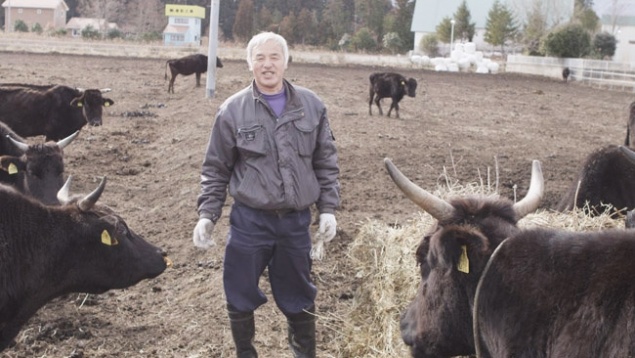
Naoto caring for cattle on his farm improvised.
Many dogs and cats have become semi-wild without people in the county - they began to hide in the woods. Scott is still home, however, he lives in an abandoned rice plantation that Naoto fenced wall, made of pipes. While the mass of surviving cows were only skin and bones, they are still luckier than 120 dead cows in the barn nearby.
"Another was the smell," - says Naoto in the barn, in which he led us. "All of them have died and rotted away, leaving behind only bone and horn. There were heaps of flies and larvae on the corpses. The city was so quiet that the only thing that could be heard - is buzzing flies. The stench was so terrible that if you were standing more than five minutes, you would fall into a swoon. Now all this has turned into bone, they are easier to watch, but then it was really awful, just like a scene from hell. More than 1,000 head of cattle were killed [in Tomioka] ».
Hunger - is not the only cause of death of animals. The government has also responsible for their deaths. After the evacuation was officially decided, seeing that it is impossible to take care of the cattle in evacuated areas, apply euthanasia on animals before they die of starvation. The order was given to 12 May 2011.

Naoto looking at the skeletons of cattle that died of starvation in the barn.
It is clear that this decision has upset Naoto. "If they were allowed into the meat, then I would calmly took it," he says. "That's life. But why would score and bury? Animals are like people. I wonder if they could so recklessly kill people ... I think it's better to take the position of "sit and watch" because it could provide a good experimental basis for comparison with other people. If animals survived, then maybe it would not worry about anything. But if the animals will beget sick offspring several generations, then it would have been madness. If this happens, the government should ban anyone show up here. "
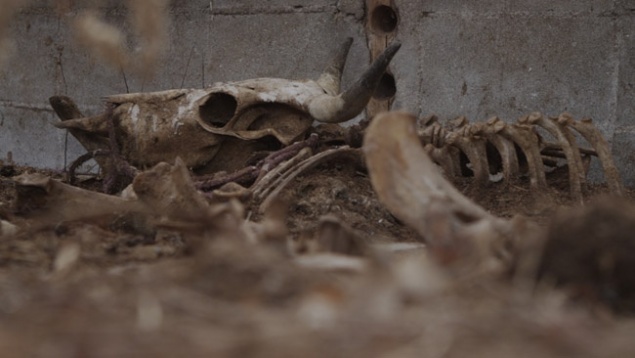
In the barn. Similar paintings can be found throughout the area of unmanned space in an evacuated area.
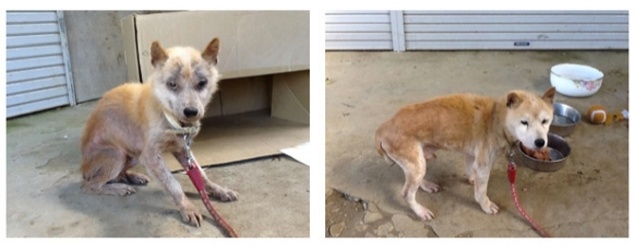
(Left) A dog that survived being trapped in a barn and a half years after the nuclear disaster, eating the flesh of dead animals. In the end, was saved Naoto summer 2012. While all wool dog lost, she recovered thanks to the care Naoto. Because of this, he called the dog Kiseki ("miracle" in Russian). (Right) Kiseki about two months after the rescue. His hair has grown back and now he looks like a real dog.
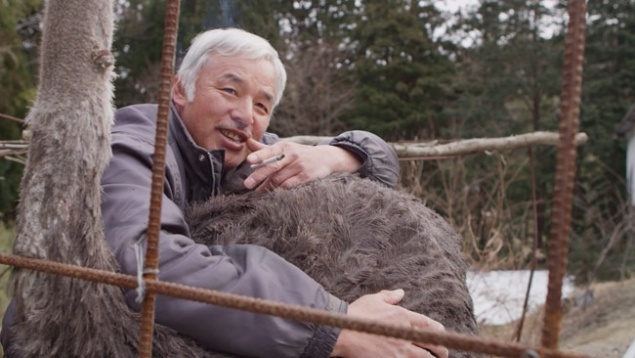
Naoto made a smoke break and rest with an ostrich.
In September Tomioka Mayor Katsuya Endo said that it would be impossible to return all evacuated for another five years, as the need for time-consuming renovation and restoration of the city infrastructure. All residents of the city - about 15,000 people are still living in shelters but Naoto and his animals, and they are not going to leave.
"Tomioka - a small town, but it is rich in nature", - says the only resident of the city. "There's next to a river, ocean, mountains, too far. You can swim in the ocean, fishing in the rivers or to gather wild vegetables in the mountains. But now it is impossible "

"I was born and raised in this city," - he told us. "If I die, it will happen in Tomioka." Naoto brown face from sunburn and wrinkled smile; his dark eyes looking at us from under heavy eyelids - this is not the face of a man who decided to go against the government, living in places where others are not even allowed to call, but Naoto comfortable with his disobedience.
Since he received a dose of radiation 17 times more than there are on average per person, and because for some time he ate only meat, vegetables and fish, which were soaked with radiation, some researchers from the Japan Aerospace Exploration Agency wanted to expose his analysis. "When I lay down and let them see me, they told me that I" champion "," - by which he means what has the highest level of radiation exposure in Japan. "But they also told me that I did not get sick more years, 30 or 40. Anyway, this time I'll be dead, so this can not worry».
Naoto home. It does not have electricity, so it uses solar panels to charge your mobile phone and computer.
They insisted that Naoto no longer ate no local produce, so now he drinks spring water, which is checked for radiation, and eats what will bring in aid from the outside. But on the other hand, his daily life has not changed under the influence of invisible but harmful particles and waves that are circling around him.
"I used to radiation. But not in the way that I see it, the field of all this "- he told us. "Other people who come here for a while forget about it ... I'm sure if you guys come here a couple of times, you will have to spit. But the arrow on the Geiger counter never stops its movement, so if you brought one with him, then you will already have this worry. That's why I do not take it with you. Although, even if I had it, I would have hardly used it ».
Dosage of radiation per hour inside the house Naoto, according to the Geiger counter, which we had brought with them, is 2 microsieverts per hour, outside value reaches 7 microsieverts. When we asked Dr. Hiroyuki Koide of Kyoto University's Research how pernicious was the impact of radiation for Naoto, he said: "According to the laws of Japan, any country with an hour higher dosing 0, 6 microsieverts should be designated as a radiation-controlled area and closed to the public . Radiation inside the territory you can not drink the water and you should not eat anything. For me it is inconceivable that an ordinary person can live there ».
Naoto, of course, an unusual man. First he left the south with his parents during a nuclear accident, but then left them and returned to Iwaki Tomioka. Naoto did it not descendants that had sentimental love of home or whether it is simply afraid of change, being in middle age. It's pretty simple: he could not leave the animals on the farm.
"At first I was afraid, because I knew that radiation has spread everywhere," - said Naoto about the first days after returning home. "The next thought in my mind was that if I stay here for a long time, then finish with cancer or leukemia. But the longer I was with animals, the more I came to the conclusion that we are still healthy and everything will be fine ».
Matsumura now takes care of cattle, pigs, cats, and even ostrich, who now do not have owners. After the incident, Naoto took responsibility for it themselves. "Our dog did not eat for the first few days. When I finally did feed them, the neighborhood dogs began to go mad. I went to see them and saw that they were still on a leash. All left the city thought that somewhere back in a week or so, I think. From the beginning, I fed all the cats and dogs every day. Waiting for me was painful for them, so they all gathered around and barking when they heard my truck. Everywhere I go, everywhere was barking. Like "we want to drink" or "we do not have food." So I just went all to go around. "

Naoto caring for cattle on his farm improvised.
Many dogs and cats have become semi-wild without people in the county - they began to hide in the woods. Scott is still home, however, he lives in an abandoned rice plantation that Naoto fenced wall, made of pipes. While the mass of surviving cows were only skin and bones, they are still luckier than 120 dead cows in the barn nearby.
"Another was the smell," - says Naoto in the barn, in which he led us. "All of them have died and rotted away, leaving behind only bone and horn. There were heaps of flies and larvae on the corpses. The city was so quiet that the only thing that could be heard - is buzzing flies. The stench was so terrible that if you were standing more than five minutes, you would fall into a swoon. Now all this has turned into bone, they are easier to watch, but then it was really awful, just like a scene from hell. More than 1,000 head of cattle were killed [in Tomioka] ».
Hunger - is not the only cause of death of animals. The government has also responsible for their deaths. After the evacuation was officially decided, seeing that it is impossible to take care of the cattle in evacuated areas, apply euthanasia on animals before they die of starvation. The order was given to 12 May 2011.

Naoto looking at the skeletons of cattle that died of starvation in the barn.
It is clear that this decision has upset Naoto. "If they were allowed into the meat, then I would calmly took it," he says. "That's life. But why would score and bury? Animals are like people. I wonder if they could so recklessly kill people ... I think it's better to take the position of "sit and watch" because it could provide a good experimental basis for comparison with other people. If animals survived, then maybe it would not worry about anything. But if the animals will beget sick offspring several generations, then it would have been madness. If this happens, the government should ban anyone show up here. "

In the barn. Similar paintings can be found throughout the area of unmanned space in an evacuated area.

(Left) A dog that survived being trapped in a barn and a half years after the nuclear disaster, eating the flesh of dead animals. In the end, was saved Naoto summer 2012. While all wool dog lost, she recovered thanks to the care Naoto. Because of this, he called the dog Kiseki ("miracle" in Russian). (Right) Kiseki about two months after the rescue. His hair has grown back and now he looks like a real dog.

Naoto made a smoke break and rest with an ostrich.
In September Tomioka Mayor Katsuya Endo said that it would be impossible to return all evacuated for another five years, as the need for time-consuming renovation and restoration of the city infrastructure. All residents of the city - about 15,000 people are still living in shelters but Naoto and his animals, and they are not going to leave.
"Tomioka - a small town, but it is rich in nature", - says the only resident of the city. "There's next to a river, ocean, mountains, too far. You can swim in the ocean, fishing in the rivers or to gather wild vegetables in the mountains. But now it is impossible "

